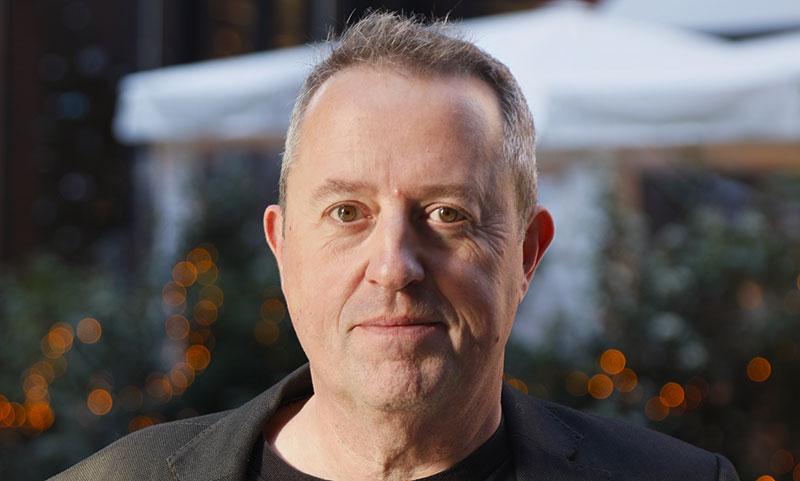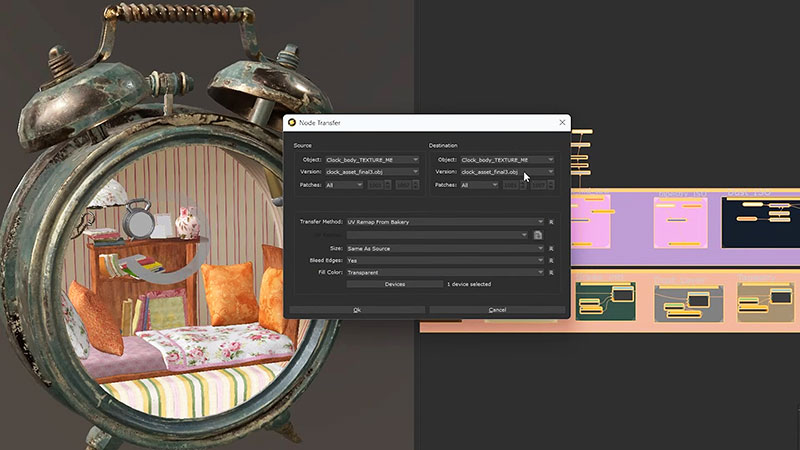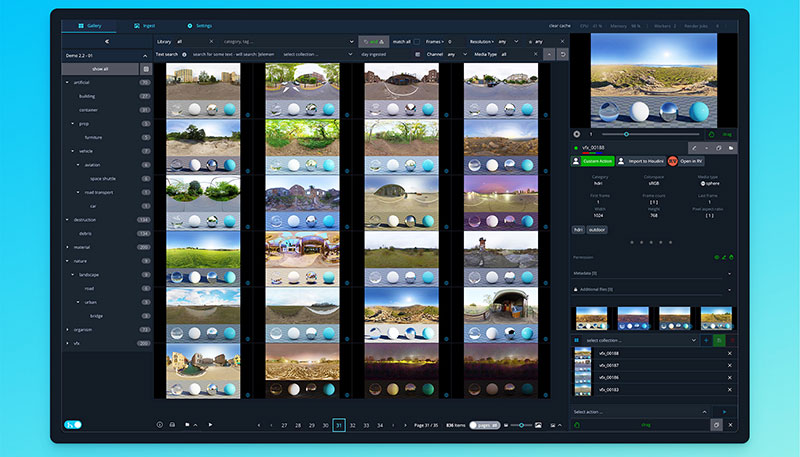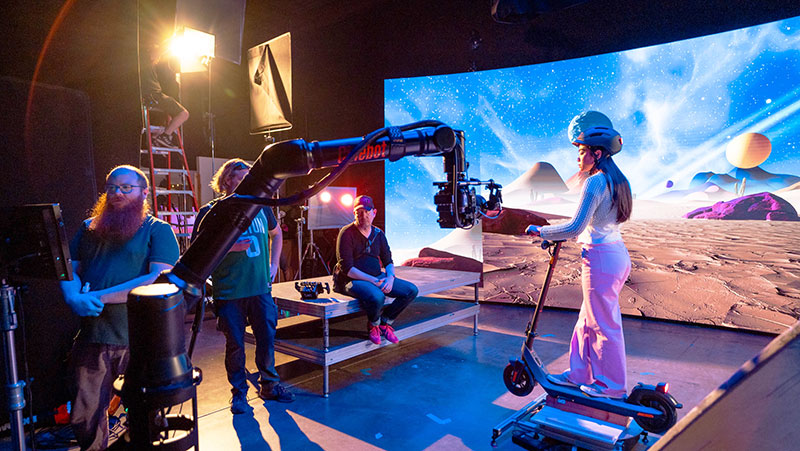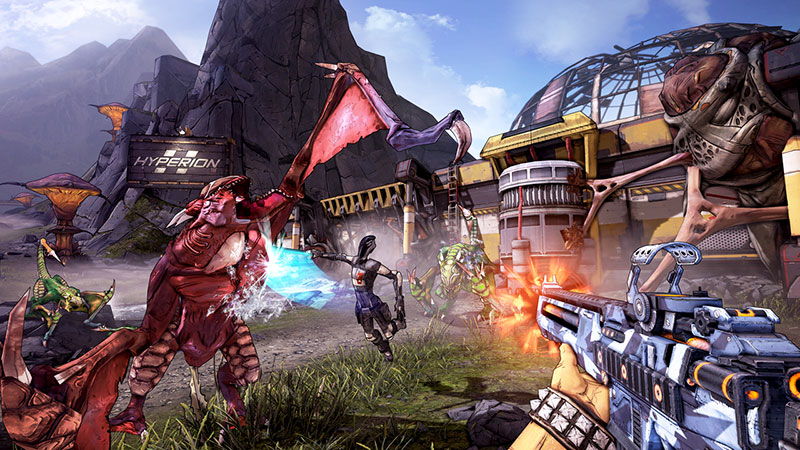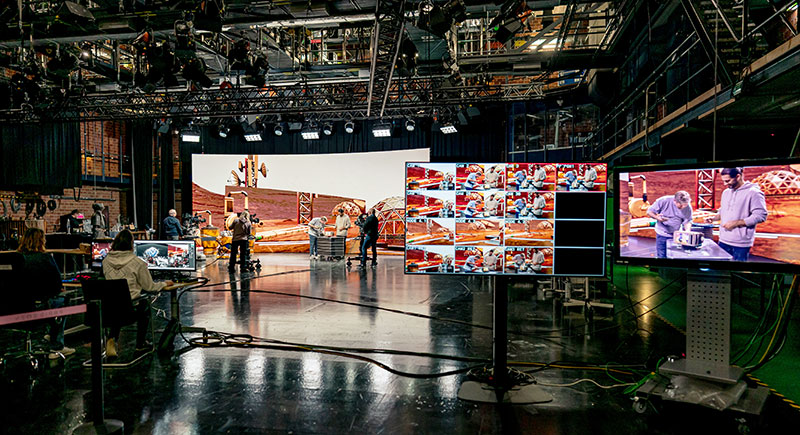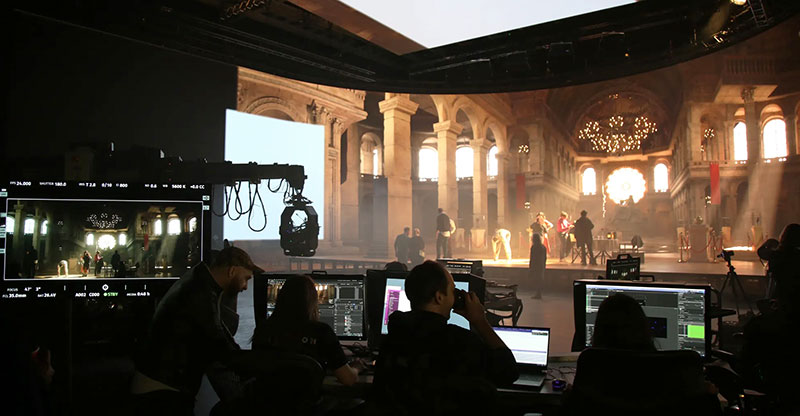Chaos V-Ray 7 for 3ds Max brings Gaussian Splat support for fast photoreal environments, new ways to create interactive virtual tours and more realistic, controllable lighting to 3D rendering.
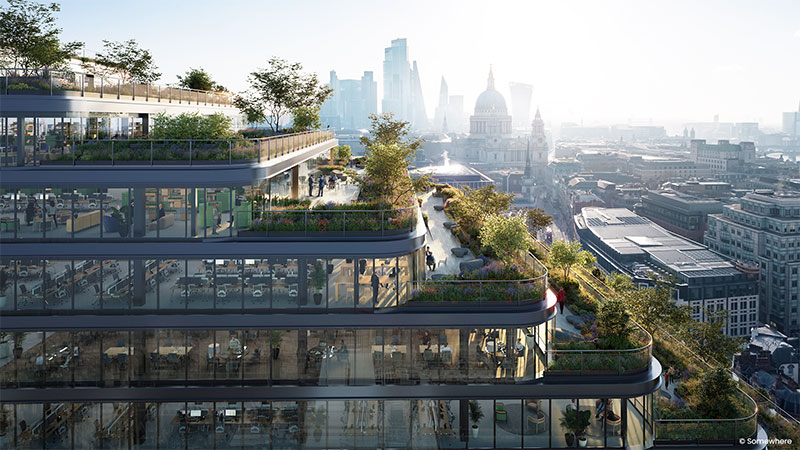
Chaos V-Ray 7 for 3ds Max brings Gaussian Splat support, new ways to create interactive virtual tours and more realistic, controllable lighting to 3D rendering. V-Ray 7 contains over 20 new features and improvements, ranging from creative scatter options to firefly removal, aimed to help users work faster and more efficiently.
3D Scene Reconstruction – Gaussian Splatting
3D Gaussian Splats are an immersive 3D scene reconstruction technique that is attracting attention as a rapid way to create realistic 3D environments from photos or videos. V-Ray 7 now includes native support for Gaussian Splats with ray-traced rendering, which makes it useful for building scenes inside of detailed, varied environments with accurate reflections and shadows in relatively little time.
Instead of relying on polygons or neural networks, 3D Gaussian Splatting creates, renders and represents 3D scenes using very small ellipsoids, called Gaussian splats. Reconstruction starts in the same way as photogrammetry – users capture photos or frames of a subject from multiple angles, and analyse the images to determine camera positions and create a preliminary 3D point cloud of the scene. Each point in the cloud is converted into a Gaussian splat with specific properties – position in 3D space, shape and size for scale and detail, colour and transparency.
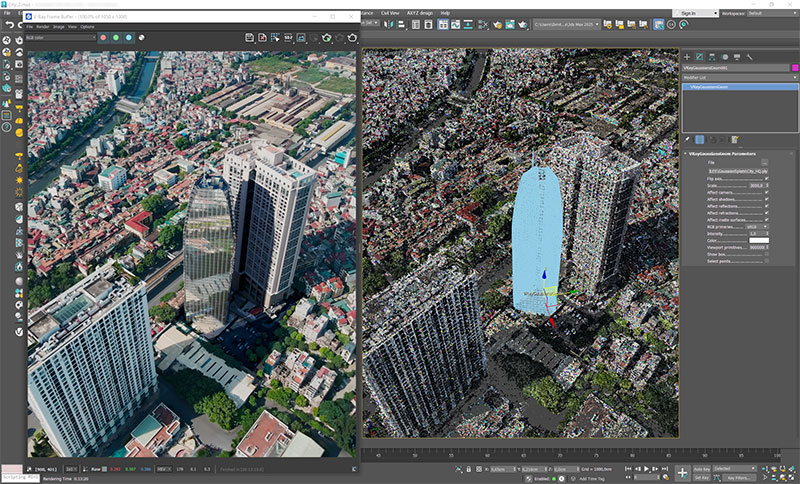
Gaussian Splat UI
Before the splats are are transformed into 3D models ready to render, they undergo an optimisation and training process involving algorithms and rasterization, however, the main value of this technique is its speed, efficiency and ultimately, its realism. It is capable of efficiently representing complex, large-scale environments with millions of splats without significantly affecting performance.
Integrating Gaussian splats into V-Ray's ray tracing engine can open new possibilities for artists, and result in accurate representations of captured scenes that include creative control. For example, using V-Ray, a 3D model can be placed in the context of a real location that is converted to a Gaussian Splat.
Virtual Tours and VFB
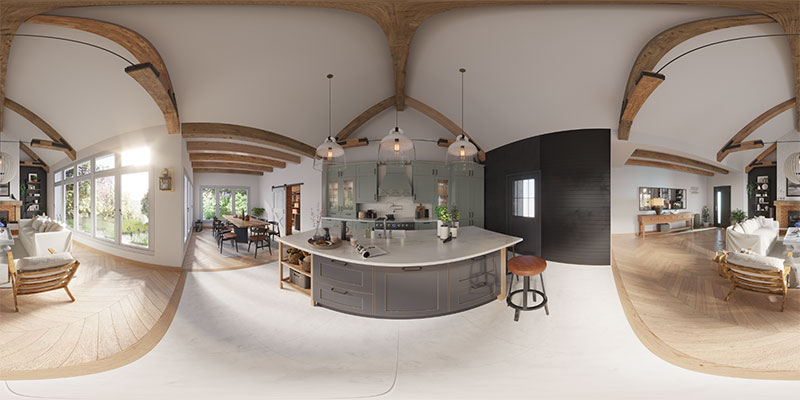
Immersive, interactive virtual tours can now be uploaded from the V-Ray 7 interface and assembled in Chaos Collaboration, owing to the direct integration between V-Ray 7’s frame buffer (VFB) and Chaos Cloud rendering service. The V-Ray VFB keeps a history and list of previously rendered images, which can be called for review and comparisons in the VFB.
This facility means artists can create panoramic experiences for colleagues, and generate hotspots automatically. Each tour can be customised by adding floor plans, refining the hotspots and transitions or including contextual details and design elements as they work.
The VFB itself has also been expanded to give users more creative control while they are there, in the buffer. For instance, multiple specific parts of a scene can be refined and rendered by idefning custom-shaped regions in the VFB, without repeated re-rendering.
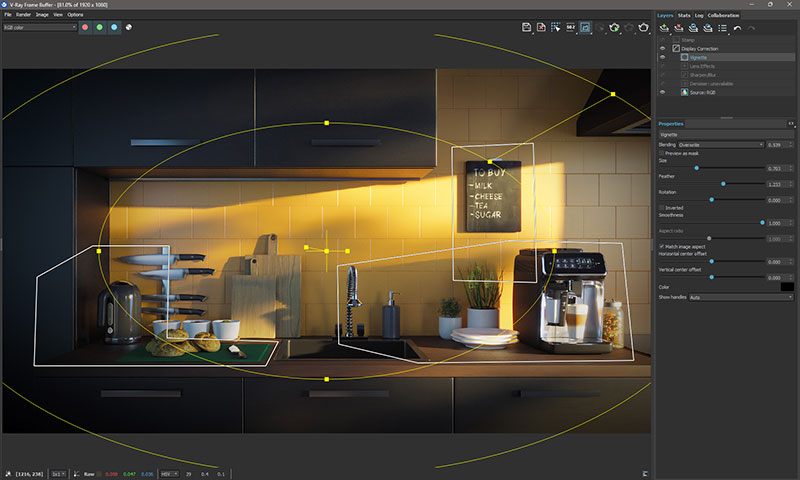
Regional vignetting
The VFB also has a new, flexible Vignette Layer for working with the vignette camera effect. Its shape can be customised before precisely applying it to an element in a render. A new series of colour correction presets is available to trial different looks for renders while still in the buffer. Any chosen preset can then be customised to achieve the required a mood or style.
Scatter Options
Chaos Scatter has new instancing and distribution options for scattering elements. A new Chaos Scatter Brush can populate instances within a scene with more precision, or help to fine-tune edges or apply an artistic look. The user can add extra detail where needed, or remove unwanted scattered objects quickly.
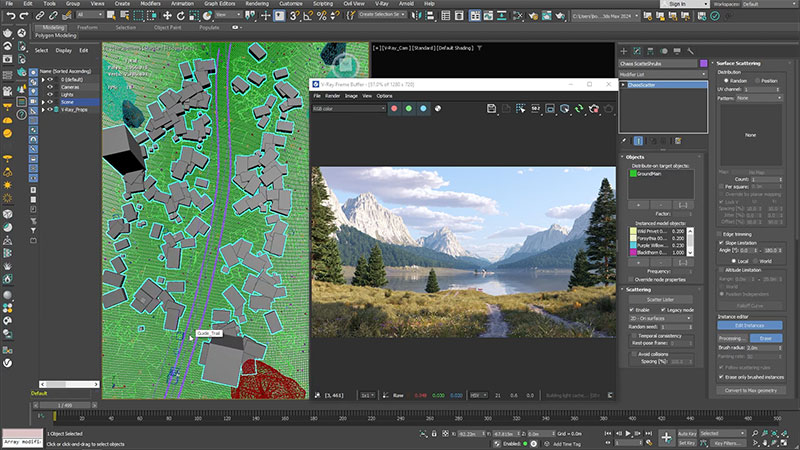
Chaos Scatter Brush
It is possible to switch between different density styles using the new library of Chaos Scatter distribution maps. The maps help achieve realistic looks, or experiment very quickly with instance distribution.
V-Ray 7 Standalone now handles Chaos Scatter procedurally. This means that even very large scattering results can be rapidly exported when network rendering or submitting to Chaos Cloud.
Scene Lighting
When lighting scenes, more realism and more effective day-to-night transitions are now possible. Improvements to V-Ray Sun & Sky include an improved PRG sky model that can create more realistic images and immersive animations for nautical twilight looks. V-Ray Sky can also render various observer altitudes up to several kilometres.
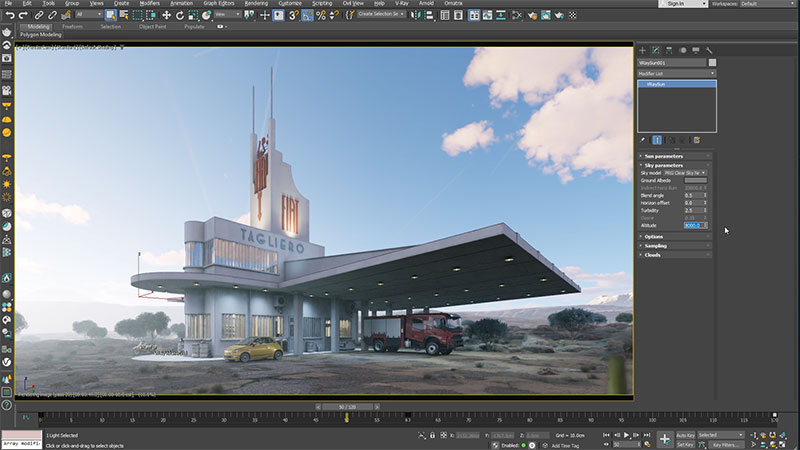
PRG Sky Model
A new lighting algorithm in V-Ray 7 automatically detects and finishes fireflies, which are unresolved pixels or artefacts, during bucket rendering. Fireflies show up as unexpected, bright single pixels scattered over parts of an image, sometimes caused by interactions between material and lighting settings. Being able to resolve them automatically saves a lot of time.
Asset Library
Another kind of lighting update is now added in the Chaos Cosmos asset library supplied with V-Ray. Complex light fixture assets are available, with light accurately distributed and correct illumination in the fixtures themselves. Though Cosmos light fixtures have always been modelled to correctly represent them in 3D scenes, simulating the illumination from such fixtures can be computationally intensive.

VRAYLuminaire UI
Now in V-Ray 7, an accurate version of the light field surrounding the light fixture is pre-calculated and stored with each Cosmos model. When the model is imported from the library, as well as the geometry and the light sources, a new type of light source is created called a VRayLuminaire light that encompasses portions of the light fixture, emulates its emission, and references the pre-calculated light field. Most of the Cosmos light fixtures are now Luminaires in V-Ray 7 to make it easier and quicker to populate scenes.
Chaos Cosmos now has more asset variations to choose from, such as seasonal options for 3D vegetation models. Users select the required variant and drag-and-drop it into a scene, modifying it after import.
Workflow Tools
V-Ray Profiler shows users how long different components of scenes took to render. It can be used to diagnose and compare the performance of different materials, and see the time spent calculating shaders and volumes, exporting scenes, compiling geometry and displacement, loading bitmaps and so on. Once the difficult components are identified, users can then optimize their pipelines for faster rendering. The Profiler can be used with the Memory Tracker for more data and insights.
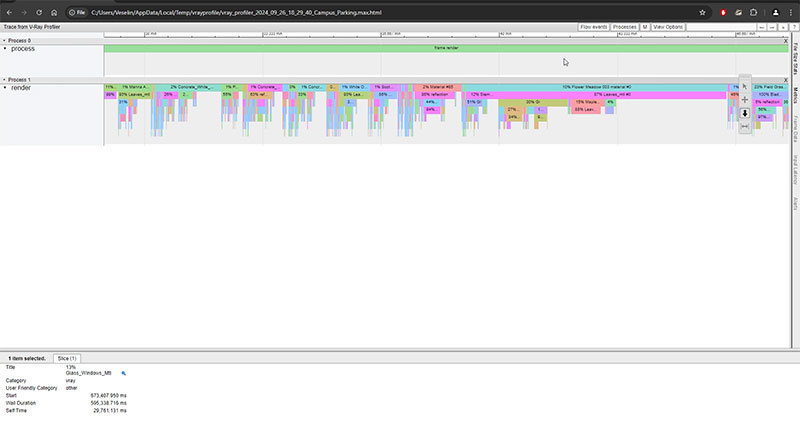
V-Ray Profiler
V-Ray Lister, a single UI where the settings of all cameras and lights in a scene are managed, now has a new tab for managing and tweaking V-Ray geometry objects including V-Ray Proxy, Fur, Decal, Clipper and others. Using the filtering options, artists can navigate and adjust settings to control multiple geometry objects directly from the Lister window.
V-Ray GPU
V-Ray GPU, which is able to take advantage of the dedicated ray-tracing hardware in the newer NVIDIA Ada Lovelace, Ampere and Turing GPUs, has received updates including new optimisations for scatter rendering, texture heavy scenes, data uploads and geometry compilations. These are expected to speed up production with faster time to first pixel, and make rendering more interactive.
Other V-Ray GPU updates support caustics, producing realistic surface reflections and refractions in both production and interactive rendering. Based on photon mapping, the new Caustics solver is also optimized to run entirely on GPU hardware, thereby achieving faster results than a CPU.
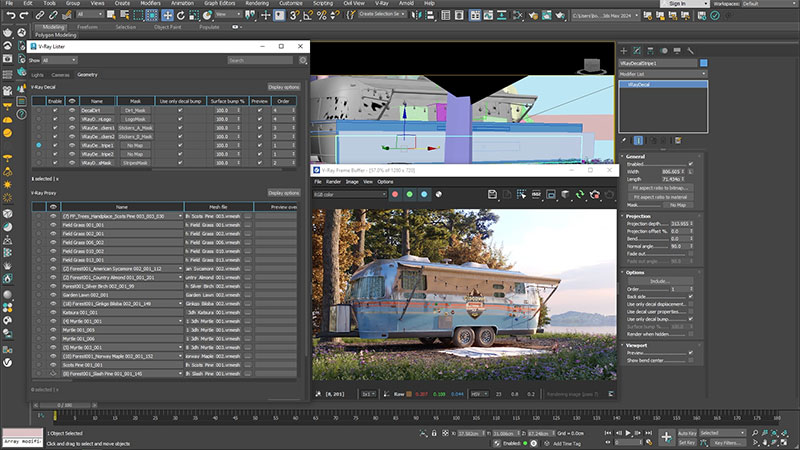
V-Ray Lister
Out-of-Core Texture rendering unloads the required memory to the hard drive by using lower resolution versions of the textures, depending on how far from camera they appear in the scene. Similar to level of detail for textures, RAM usage is lowered without affecting the final appearance. As texture-heavy scenes can be rendered more efficiently, detail can be enhanced in scenes without sacrificing shading quality.
Among other V-Ray 7 for 3ds Max updates is the ability to convert selected objects, update materials with a new Material Process, or convert textures to .TX files for better, smoother performance – all using the same tools.
V-Ray 7 now supports the latest version of USD for Autodesk 3ds Max 0.9.0, and also the OpenPBR Material just introduced with 3ds Max 2025.3 in October 2024. Aiming for efficiency, the OpenPBR shading model reduces the need for manual adjustments when switching between compatible renderers and applications.
V-Ray 7 for 3ds Max is available now for 3ds Max versions 2020 - 2025. www.chaos.com/vray


